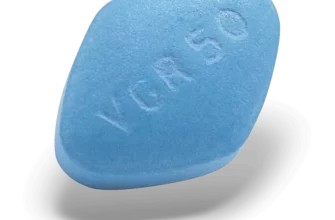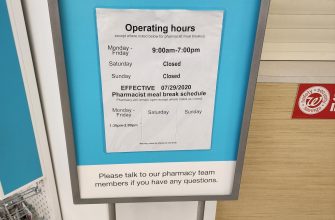Propranolol 10mg can offer significant relief from anxiety symptoms for many individuals. This dosage often targets physical manifestations of anxiety, such as rapid heartbeat, trembling, and sweating, making it a valuable tool in managing anxiety disorders. Remember, it’s crucial to consult your doctor before starting any new medication.
While Propranolol 10mg isn’t a cure-all, it effectively reduces the physical symptoms associated with anxiety attacks and performance anxiety. Many find it beneficial for specific situations like public speaking or social gatherings. Its effectiveness varies between individuals, so open communication with your physician is vital for personalized treatment.
Potential side effects should be discussed with your healthcare provider. These can include fatigue, nausea, and dizziness. Your doctor can help assess the risks and benefits, tailoring the treatment to your individual needs and health history. They can also advise on other strategies to manage your anxiety, potentially combining Propranolol with therapy or lifestyle changes for optimal results.
Dosage adjustments are a key aspect of Propranolol treatment. Your physician will determine the appropriate dosage and frequency based on your response and tolerance. Regular check-ups allow for monitoring your progress and making necessary modifications to ensure the treatment is both safe and effective. Do not alter your dosage without consulting your doctor.
- Propranolol 10mg for Anxiety: A Detailed Guide
- Understanding Propranolol’s Role
- Potential Side Effects and Precautions
- Alternative Anxiety Management Strategies
- Dosage and Administration
- Understanding Propranolol’s Mechanism for Anxiety Relief
- Dosage and Administration of Propranolol 10mg for Anxiety
- Typical Administration
- Dosage Adjustments
- Important Considerations
- Stopping Treatment
- Common Side Effects and How to Manage Them
- Less Common, but Important Side Effects
- Managing Side Effects: A Practical Guide
- Propranolol 10mg vs. Other Anxiety Treatments
- When to Consult a Doctor Regarding Propranolol Use
- Potential Interactions and Precautions with Propranolol 10mg
- Medication Interactions
- Precautions
- Allergic Reactions
- Long-Term Use and Weaning Off Propranolol
- Tapering Schedule
- Potential Withdrawal Symptoms
- Alternative Approaches
- Ongoing Support
Propranolol 10mg for Anxiety: A Detailed Guide
Propranolol 10mg is a beta-blocker often prescribed off-label to manage anxiety symptoms, particularly performance anxiety or social anxiety. It works by blocking the effects of adrenaline, reducing physical symptoms like rapid heartbeat, trembling, and sweating. However, it doesn’t address the underlying causes of anxiety; it targets the physical manifestations.
Understanding Propranolol’s Role
This medication is best suited for situations causing acute anxiety, such as public speaking or medical procedures. It’s less effective for generalized anxiety disorder (GAD) or panic disorder, which require longer-term treatment. Expect effects to start within 30-60 minutes of ingestion, peaking after a couple of hours. The effects typically last around 3-4 hours. Consider the timing carefully to coincide with the anticipated anxiety-provoking event. Always follow your doctor’s instructions on dosage and frequency.
Potential Side Effects and Precautions
Common side effects include dizziness, nausea, fatigue, and low blood pressure. Rarely, more severe reactions may occur. Inform your doctor about any pre-existing conditions, such as asthma, heart problems, or diabetes, before taking Propranolol, as it may interact negatively with some medications. It’s also important to discuss this treatment with your doctor before using it, particularly if you have other health issues. Pregnancy and breastfeeding should also be discussed with a healthcare provider.
Alternative Anxiety Management Strategies
Propranolol addresses physical anxiety symptoms, but it’s often more helpful to combine it with other strategies for holistic anxiety management. These could include therapy, such as cognitive behavioral therapy (CBT), stress-reduction techniques like mindfulness or meditation, regular exercise, and a balanced diet. A healthy lifestyle contributes significantly to anxiety reduction. Consult a therapist or other mental health professional for a personalized treatment plan.
Dosage and Administration
Never adjust your dosage without consulting your doctor. Your physician will determine the appropriate dose based on your specific needs and medical history. Improper usage can lead to adverse effects. Take Propranolol as directed and never exceed the prescribed amount.
Understanding Propranolol’s Mechanism for Anxiety Relief
Propranolol helps manage anxiety symptoms by blocking beta-adrenergic receptors. These receptors are found in your heart, lungs, and blood vessels. During anxiety, your body releases adrenaline, which activates these receptors, leading to increased heart rate, rapid breathing, and trembling. Propranolol prevents adrenaline from binding to these receptors, reducing these physical manifestations of anxiety.
This action specifically targets the physical symptoms of anxiety–the racing heart, sweating, and shakiness–rather than the underlying emotional or cognitive aspects. It doesn’t address worries or racing thoughts directly.
Note: Propranolol is a beta-blocker, not an anxiolytic. It’s often used to manage performance anxiety or situational anxiety where physical symptoms are prominent. For generalized anxiety disorder or panic disorder, it’s usually prescribed alongside other medications or therapies.
The dosage, 10mg, is a relatively low dose often used for initial treatment or specific situations. Higher doses might be prescribed depending on individual needs and response. Always follow your doctor’s instructions and consult them before adjusting your medication.
Important: Propranolol can interact with other medications. Inform your doctor about all medications and supplements you are taking. Common side effects include fatigue, dizziness, and nausea, although these can vary between individuals.
Dosage and Administration of Propranolol 10mg for Anxiety
Propranolol 10mg is usually prescribed as a starting dose for anxiety. Your doctor will determine the correct dosage based on your individual needs and response to treatment. This dose may be adjusted upwards or downwards depending on your response. Always follow your doctor’s instructions precisely.
Typical Administration
Propranolol 10mg tablets are typically taken orally, usually twice daily, with or without food. Taking it with food can help minimize stomach upset for some individuals. The timing of your doses can be customized depending on the specific symptoms you’re managing. Discuss the optimal timing with your physician.
Dosage Adjustments
If 10mg twice daily proves insufficient, your doctor may gradually increase the dosage. However, increasing the dose should always be done under medical supervision. Conversely, if you experience side effects, your doctor may lower your dosage. Regular communication with your doctor is key to finding the right balance.
Important Considerations
| Aspect | Information |
|---|---|
| Missed Dose | If you miss a dose, take it as soon as you remember unless it’s almost time for your next dose. Never double the dose to make up for a missed one. |
| Side Effects | Common side effects include dizziness, fatigue, and nausea. Report any concerning side effects to your physician immediately. |
| Interactions | Inform your doctor about all other medications, supplements, or herbal remedies you are taking, as Propranolol can interact with other drugs. |
| Pregnancy/Breastfeeding | Discuss the use of Propranolol with your doctor if you are pregnant, breastfeeding, or planning to become pregnant. |
Stopping Treatment
Never stop taking Propranolol abruptly without consulting your doctor. Gradual tapering of the dosage is necessary to avoid withdrawal symptoms. Your physician will guide you through this process to ensure a safe transition.
Common Side Effects and How to Manage Them
Propranolol, while effective for anxiety, can cause some side effects. The most frequent include dizziness, fatigue, and nausea. Drink plenty of fluids to combat nausea and dizziness; rest when needed to manage fatigue. These usually subside as your body adjusts to the medication.
Lowering your dose gradually, under your doctor’s supervision, may help if these side effects persist. Discuss any concerns with your healthcare provider before making changes to your medication regimen. They can offer tailored advice based on your individual needs.
Less Common, but Important Side Effects
You might experience less common side effects such as cold hands and feet, sleep disturbances, or a slow heartbeat (bradycardia). For cold extremities, dress warmly and avoid prolonged exposure to cold temperatures. If sleep problems occur, try establishing a relaxing bedtime routine. Bradycardia is more serious; report this to your doctor immediately.
Managing Side Effects: A Practical Guide
| Side Effect | Management Strategies |
|---|---|
| Dizziness | Rise slowly from sitting or lying positions, stay hydrated. |
| Fatigue | Prioritize rest, avoid strenuous activity during periods of fatigue. |
| Nausea | Eat small, frequent meals, avoid greasy or spicy foods. |
| Cold Extremities | Wear warm clothing, avoid cold environments. |
| Sleep Disturbances | Establish a relaxing bedtime routine, avoid caffeine before bed. |
| Bradycardia | Contact your doctor immediately. |
Remember to regularly communicate with your doctor about how you’re feeling. Open communication is key to successful treatment. They can adjust your medication or suggest additional strategies to better manage any side effects you experience.
Propranolol 10mg vs. Other Anxiety Treatments
Propranolol 10mg targets physical anxiety symptoms like rapid heartbeat and trembling. This differs from other treatments focusing on underlying anxiety causes. Consider its use for performance anxiety or specific triggers where quick symptom relief is paramount.
Cognitive Behavioral Therapy (CBT) teaches coping mechanisms to manage anxiety’s root causes. Unlike propranolol, CBT addresses thought patterns and behaviors, providing long-term strategies. It’s particularly beneficial for generalized anxiety disorder.
Serotonin-norepinephrine reuptake inhibitors (SNRIs) and selective serotonin reuptake inhibitors (SSRIs) alter brain chemistry to reduce anxiety. These medications address the underlying chemical imbalance but may take several weeks to show effects, unlike propranolol’s immediate action. They are usually better suited for chronic anxiety disorders.
Benzodiazepines offer rapid anxiety relief but carry a risk of dependence and withdrawal. They are usually prescribed for short-term use, unlike propranolol, which, while not without potential side effects, doesn’t have the same dependence concerns.
Lifestyle changes, including exercise, mindfulness, and dietary adjustments, can complement medication or therapy. Regular exercise, for example, produces endorphins that naturally alleviate anxiety. Combining these with propranolol or other treatments can improve overall results.
Your doctor should assess your specific needs and medical history to determine the best treatment. Propranolol 10mg might be a component of a broader anxiety management plan. Discuss all options thoroughly to find the approach that suits you best.
When to Consult a Doctor Regarding Propranolol Use
Contact your doctor immediately if you experience any of the following:
- Chest pain or discomfort.
- Shortness of breath or difficulty breathing.
- Swelling in your ankles, feet, or legs.
- Severe dizziness or fainting.
- Slow or irregular heartbeat.
- Cold or bluish extremities.
- Unusual fatigue or weakness.
- Difficulty sleeping (insomnia).
- Severe stomach pain.
- Skin rash or itching.
- Yellowing of the skin or eyes (jaundice).
Schedule a doctor’s appointment if you notice:
- Your anxiety symptoms aren’t improving after a few weeks of taking Propranolol.
- You’re experiencing new or worsening side effects.
- You need to adjust your dosage.
- You’re considering stopping Propranolol.
- You have questions about drug interactions with other medications you take.
- You’re planning a significant change in lifestyle, such as starting a new exercise routine.
Regular check-ups with your doctor are recommended while on Propranolol to monitor your progress and manage potential side effects. Open communication with your healthcare provider ensures safe and effective treatment.
Potential Interactions and Precautions with Propranolol 10mg
Always inform your doctor about all medications you’re taking, including over-the-counter drugs, supplements, and herbal remedies. Propranolol can interact negatively with several medications.
Medication Interactions
Combining Propranolol with other beta-blockers can cause dangerously low heart rate and blood pressure. Similarly, concurrent use with calcium channel blockers (like verapamil or diltiazem) increases the risk of bradycardia and hypotension. Combining with insulin or oral hypoglycemics may mask symptoms of low blood sugar. MAO inhibitors can potentiate Propranolol’s effects, leading to excessive blood pressure lowering. Consult your physician if you use any of these. Certain antidepressants (like SSRIs or TCAs) might also influence the drug’s efficacy.
Precautions
Asthma and COPD: Propranolol can worsen respiratory conditions. Discuss your respiratory health with your doctor before starting this medication. Heart problems: Propranolol can exacerbate certain heart conditions like bradycardia or heart block. Your doctor needs a complete history of your cardiac health. Liver or kidney disease: These conditions can affect how your body processes Propranolol. Dosage adjustments are often required. Diabetes: Propranolol can mask hypoglycemia symptoms. Regular blood glucose monitoring is crucial. Alcohol consumption should be minimized, as alcohol may worsen the side effects of Propranolol. Inform your doctor if you drink alcohol regularly. Pregnancy and breastfeeding: Consult your physician about the safety of using Propranolol during pregnancy or breastfeeding.
Allergic Reactions
Seek immediate medical attention if you experience symptoms like hives, swelling of the face, lips, or tongue, difficulty breathing, or a rapid heartbeat after taking Propranolol. These could indicate a serious allergic reaction.
Long-Term Use and Weaning Off Propranolol
Propranolol’s long-term use should always be discussed with your doctor. They’ll assess your individual needs and determine the best course of action. Sudden cessation can be risky; therefore, a gradual reduction, or tapering, is usually recommended.
Tapering Schedule
Your doctor will create a personalized tapering schedule. This typically involves gradually decreasing your dosage over several weeks or months. A common approach might look like this:
- Reduce your dosage by 2.5mg every few days or a week.
- Monitor for any withdrawal symptoms (increased anxiety, tremors, palpitations). Report these to your doctor immediately.
- Adjust the tapering schedule based on your response. A slower reduction may be necessary if you experience significant withdrawal.
- Continue this process until you reach zero dosage.
Remember, individual responses vary. What works for one person might not work for another. Close collaboration with your healthcare provider is vital for a successful and safe discontinuation.
Potential Withdrawal Symptoms
- Increased anxiety
- Tremors
- Headaches
- Palpitations
- Insomnia
- Increased blood pressure
If you experience any of these symptoms, contact your doctor immediately. They might adjust your tapering schedule or suggest alternative management strategies.
Alternative Approaches
Once you’ve successfully weaned off Propranolol, your doctor may recommend alternative anxiety management techniques like therapy, lifestyle changes (e.g., regular exercise, stress management techniques), or other medications.
Ongoing Support
Maintaining contact with your healthcare provider throughout the weaning process and beyond is crucial. They can monitor your progress, address any concerns, and provide ongoing support.







